Last Edited: September 2025
There’s a wide variety of HEMA equipment available online. We’ve put together here a few kit recommendations that our club members use. These recommendations shouldn’t be taken as endorsements and you should know that an industry supplying a relatively young activity like HEMA will inevitably have quality control issues.
Different clubs will have different opinions so make sure you check with your instructor first (especially if you’re not an LHFC student)!
This guide starts off with generic recommendations, followed by weapon-specific recommendations. Make sure you’re looking at the right section for your weapon, especially when it comes to gloves.
Do not buy
Here’s a few pieces of equipment we don’t typically allow at the club and would discourage you from buying. If you’ve got questions, please get in touch or talk to your instructor.
Feders
An important distinction is between feders and longsword blunts – feders are designed to be used in fencing and sparring, while longsword blunts are blunt versions of actual longswords and tend to be shorter and won’t fit your gloves as well. With a few exceptions, they’re much less safe.
- Any Regenyei Longswords – these “longswords” don’t flex and hit considerably harder. We don’t allow these in LHFC for sparring. For “longsword”-style trainers, check out the Kvetun Easton, Sigi King, Sigi Schiltless, or Regenyei Schiltless.
- Kvetun FFG Feder – these are very stiff, and there are many other alternatives if you like the schilt shape like the Regenyei Wide.
- Regenyei “Strong” blades on Feders – while some are still in use, we strongly recommend that all new feders that you buy are Light flex. While OK for drilling, they’re not accepted in tournaments.
- Kingston Arms Feder – these will often fall apart under any meaningful pressure due to bad QC and build quality.
- Ensifer Feder – the examples we’ve handled have consistently been too stiff despite having a 15kg flex rating – this suggests their testing method is different to ours.
- Chlebowski – the examples we’ve handled are too stiff.
Sabres
- Hanwei Hutton – these are not suitable as they have variable build quality and have very weak guards which easily deform.
- VB Heavy – the blade on this sabre is too heavy.
- Any wide-bladed “Hussar”-style sabre – the blades on these are typically too heavy and hit very hard. For sabres with a similar aesthetic, consider a Kvetun “1820” hilt on the Easton sabre or a Sigi with a Bow hilt.
Rapiers
- Any nylon/synthetic rapier – they don’t flex in the thrust, bind weirdly, and aren’t great for cutting either
Protective Equipment
- The SPES “Historical” Gambeson – this doesn’t have a proper closure at the front, potentially allowing for a blade to slip through. Choose the normal FG if you like the design.
- Arcem Mini Gorget – these have a habit of trapping swords underneath or otherwise letting thrusts through into the neck. For an alternative lightweight hard plastic design, take a look at the Vytis Gorget. Otherwise, the Red Dragon Gorget is also well-regarded and used by many of us.
- Sparring Glove “Special” – the hard epoxy fingers on these models can shatter on impact and hurt your fingers. Avoid this model. If you want five-finger longsword gloves, consider the Thokks (with the Longsword Attachment) or Gabriel Gloves.
- Red Dragon Dreadnought Sparring Gloves – these have a known issue with their rivets being very weak. They also have very little padding unlike the other five-finger glove options.
- Most knee protectors not explicitly recommended in the section below – they don’t have enough hard coverage around the sides of the knees.
Essentials
Jacket
A HEMA fencing jacket is one of the first pieces of kit we’d recommend getting. While we have a few in the club, you might not get one in your size every session. HEMA jackets must be at least 350N rated and have a zip closure system. Re-enactment gambesons and jackets are not safe for HEMA use, as they’re often unprotected in areas like the armpits.
You should keep two things in mind – puncture resistance and padding. Jackets are normally either 350N or 800N rated for puncture resistance, which refers to the toughness of the fabric to piercing.
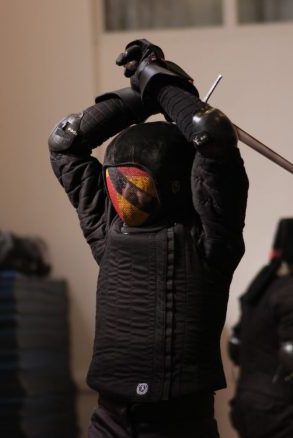
Padding is a separate factor. It’s not measured objectively – rather, you’ll have to feel them for yourself. Padding helps soften hits but doesn’t necessarily stop punctures. For example, a 800N puncture-rated jacket may have light padding – this means that while it would prevent puncture wounds, it will still hurt to get hit, potentially leading to heavy bruising or even broken bones. Conversely, getting hit while wearing a heavily-padded 350N jacket won’t hurt as much.
Lighter jackets will require hard protection around the arms, as they lack padding there.
Recommended manufacturers:
- SPES – SPES jackets are the most common ones found in HEMA and for good reason. They’re well-made and come in a variety of styles and sizes. Note that their Historical Gambeson (with the laces) are not advised as they lack a zip closure. Custom orders can have inconsistent sizing – stick with their standard sizes if you can.
- PBT Historical Fencing – some of their jackets fasten from the back, which can be a little inconvenient.
- Superior Fencing – these are custom made to order, giving you a chance to customise the colours. Their tailoring is sometimes inconsistent.
- Red Dragon – suitable for steel sparring and no lead time
- Black Armoury Arcem
Mask
HEMA masks are either rated to 350N or 1600N. We’d recommend getting 1600N if you want to spar with steel swords and most tournaments will require this rating for competitors. 350N masks are suitable for sparring with synthetics or gentler sparring with steel swords but aren’t worth the price difference.
Recommended manufacturers
- Gajardoni Kombat Mask (available through SPES)
- Leon Paul X-Change Contour Coaching Mask
- Allstar Masters Comfort Plus Mask 1600N
- Red Dragon 1600N
Gorget
A gorget is worn under the mask and protects the neck and windpipe from blades that manage to slip under the mask bib. We consider it mandatory for sparring and contact drills.
Recommended manufacturers
- The Vytis gorget is highly recommended, and it provides a solid and smooth surface. It theoretically deflects blades due to its shape, meaning there’s a lower chance of injury. It has the added benefit of being one of the lighter options.
- Red Dragon Gorget – a good choice which is cheap, readily available and suitable protection up to and including tournament longsword
- PBT gorget – similar to the Red Dragon with extra collar bone protection. Not recommended for smaller fencers as it can interfere with movements when combined with a jacket.
Back of head protection
Back of head protection is highly recommended for sparring and mandatory for steel sparring in longsword and sabre. It protects the rear of the head and is vital for avoiding serious head injuries.
Recommended manufacturers:
- SPES Unity Overlay & BoH – this is the standard choice and is recommended by default
- Red Dragon Leather Mask Overlay
- SPES Vectir BoH Protector – this lacks the protection on the side and top of the head but is lighter.
Arm protection
Elbow and forearm protection is optional for lighter sparring but mandatory for steel sparring in longsword and sabre, and tournaments. Most of the options below are modular so you can buy the forearm and elbow protectors separately if you want.
Recommended manufacturers
- THOKK “Extended Cuff” – Lightweight and protective, and usable even without THOKK gloves. No elbow cups included. They’re light and relatively low profile while giving very good protection.
- Light hard plastic forearms (eg. by Amber Damare in the US, but also easy to make yourself) are very light, low profile and highly protective.
- SPES Vectir Forearm and Elbow Protector – these are protective but very bulky and heavy.
- SPES Geko Forearm and Elbow Protector – these are protective but very bulky and heavy.
- Red Dragon Forearm and Elbow Protector
- Arcem Mini Forearms – these are more minimalist. They don’t come with elbow protection.
- SPES Elbow Cups – can be purchased separately if you arms are already covered
Note that some gloves (e.g. Sparring Gloves) have long cuffs and do not need separate forearm guards, but would still require elbows.
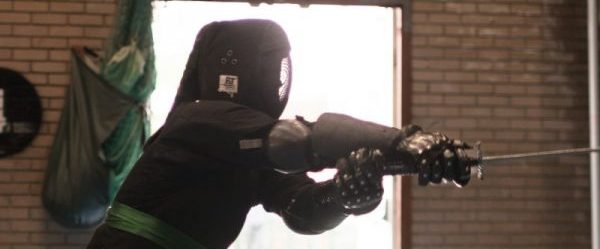
Shin protection
Our members use a variety of shinguards. Some have combined knee and shin protection, while some require you to get them separately.
Recommended manufacturers
- Hockey shinpads worn under knee-length socks – these are the lightest option and will give you an excellent level of protection. They’re low-profile and can be kept on without any discomfort. You’ll see a lot of these in tournaments.
- Red Dragon Shin and Knee Protectors – heavier and bulkier than hockey shinguards but include integrated knee protection.
Many members use motocross knee protection, but the brands we use have been discontinued. Most motocross leg guards do not cover the side of the knee and have a gap between knee and shin
Knee protection
One of the more important “recommended” items of protection – we’d recommend this for most sparring and require it for steel sparring in longsword and sabre. If you have very small knees, you might want to use an elbow cup instead of the knee protection.
Recommended manufacturers
Sabre
Jacket
Sabre calls for a relatively high level of protective equipment so we’d suggest going for a SPES AP. We’d also highly recommend jackets like the SPES AP Light or SPES Officer but with additional hard protection on the arms.
Gloves
Sabre gloves stray the fine line between protection and dexterity. Five-fingered gloves are essential to grip and use a sabre correctly and comfortably. If you’re using an open hilt or stirrup hilt steel sabre, longsword gloves are required.
Recommended manufacturers
- Thokk Weaponmaster – this is what most members use. We find them to be the best in terms of protection and dexterity. All our members have been happy with the performance of the gloves, but others in the wider community have raised concerns over QC issues. We’ve not yet found any of these issues in our batches.
- HF Armory Firestone – similar in construction to the Red Dragon gloves, but with better protection.
- Superior Fencing Impact Resistant Gloves – they’re chunkier than the Thokks and those with larger hands will find it difficult to fit into a bowl hilt. We’ve also had some complaints from our members about QC and customer service.
Not recommended
- Red Dragon HEMA Gloves – the cheapest and most widely available, but is considered the bare minimum for steel sparring. These are older designs, and have many weak points (including a total lack of protection on the wrist). We have tons of these at the club so we’d suggest borrowing them until you’re ready to buy your own.
Sword
Sabres are cut and thrust weapons, meaning that a fencing sabre should be able to do both safely. We have synthetic sabres at our club but if you want to fence with steel you will have to get your own.
For steel sabres, we generally look for a sabre weighing between 700-950g, with good flexibility in the thrust. Heavier sabres (particularly Eastern European styles) should be considered on a case-by-case basis, as their mass in the blade may be too much to cut safely.
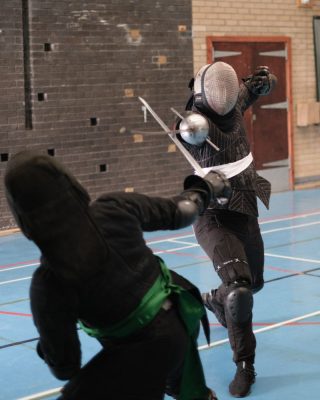
Recommended manufacturers
- Sigi – the Pro model is recommended but has a higher cost. The blade is nice and flexible but the grip can be on the smaller side. The Sigi Big will work for those with larger gloves. These are occasionally available at the HEMA Shop, but at a higher price than you’d pay with import taxes.
- Kvetun – the Easton Sabre is good but Kvetun currently have issues shipping to the UK. For the best hand protection, we’d recommend the default “bowl” guard. The “three bar” is also good but heavier (mostly in the guard) and less protective. The more minimalist guards (Polish, slotted and “1820”) are safe to use but are less protective – we’d recommend heavier gloves (longsword-style) with these.
- Regenyei – the most recent batch of Regenyei Tournament sabres are recommended – they’re available on the HEMA Shop. Avoid buying older models, as they’ve been known to be extremely stiff and borderline unsafe.
- Krieger Weapons (not Krieger Armory) – the Krieger S2 and S6 sabres are an option. The curve is quite unusual and aggressive.
Rapier
Jacket
Our style of rapier is Italian and is more focused on the thrust (but still has a significant amount of cutting involved). This means that we’d recommend a jacket with a higher puncture resistance rating, whereas padding is slightly less crucial.
Our club offers loaner jackets, which are mostly sport fencing unpadded jackets. These are fine in conjunction with a chest protector for drills and gentle in-class sparring but we’d highly recommend a HEMA jacket for sparring, as fencing whites will let the force from cuts through.
Jackets like the SPES Officer or AP Light (in conjunction with a chest protector) are great for rapier.
Chest Protector
Due to the amount of thrusting involved in rapier fencing, a rigid plastic chest protector is highly recommended. Repeated thrusts in drills can get uncomfortable quite quickly. We’d recommend a hard plastic protector (rather than a padded plastron) as they’re lighter.
Recommended manufacturers
- Masterguard Chest Protector – available from the Leon Paul website
Sword
Rapiers should have a blade that’s flexible in the thrust while not being “floppy”. Cuphilt rapiers will give the most protection but some members prefer swept-hilts for aesthetic reasons. These will be less protective against thrusts but can still stop certain cuts.
We have many club rapiers from Malleus Martialis so these should be the last thing you get.
Recommended manufacturers
- Malleus Martialis Galante – these are our club rapiers
- Bellatore
- Destrezania
- Sigi Forge
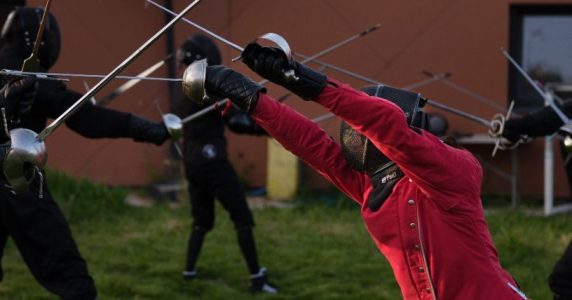
Smallsword
Jacket
Smallsword fencing is the least percussive of the systems we teach, meaning that puncture resistance is more important than padding when it comes to jackets. A light HEMA jacket like the SPES Officer or AP Light is more than enough.
Our club offers loaner jackets, which are mostly sport fencing unpadded jackets. These are suitable for smallsword but if you’re interested in doing any other weapons we’d recommend a dedicated HEMA jacket.
Sword
At LHFC, we use smallsword simulators with non-electrified epee fencing blades.
Recommended manufacturers
- Feather Smallswords – these have a more aesthetically pleasing appearance but still use the interchangeable epee blades
- Leon Paul smallsword trainer – functional and uses the epee blades
- Shrewsbury Armoury
Longsword
Jacket
Longsword generally benefits from heavier jackets, such as the AP. While some of our members have heavier jackets, such as the AP Hussar, in general people use the regular AP or the AP Light. For the AP Light we’d recommend using a chest protector and considering a padded rugby undershirt.
Recommended manufacturers
- SPES AP
- SPES AP Light (with extra protection)
- SPES Officer (with extra protection)
- SPES Hussar (This is quite thick and harder to move around in – it’s also very warm!)
Gloves
Longsword requires heavier gloves than other disciplines as they have very minimal guards. There are two main styles – a “five finger” design with more flexibility or “hoof” style gloves with a hard shell over the entire hand.
Recommended manufacturers
- THOKK Weapon Master WITH Longsword Attachment – Pro or BladeProof models are both fine
- Sparring Gloves “Mittens” (custom size available) – any variation of the cuffs
- HF Armory Black Knight
For smaller hands, the Thokks and Sparring Gloves are good choices.
Sword
At LHFC we train with federschwerts (feders). Each brand has a range of sizes available. We recommend getting one that is no longer than the length from your armpit to the floor. Shorter swords will give more strength in the bind and tend to be lighter and quicker. Longer swords will give you a greater striking distance.
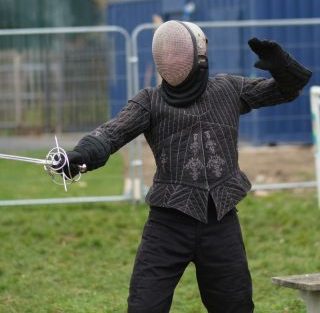
If you can, we would recommend trying out a few different types of sword before buying one to make sure you get one that’s right for you. We have a number of swords in the club kit that you can try out at class.
Recommended manufacturers:
- SIGI Forge – SIGI are known for high-quality swords that have excellent flex in the blade.
- Regenyei – Regenyei feders have for many years been the standard. While there are more competitors in the space, a Regenyei feder is still a great choice. They also tend to be more readily available. Regenyei “Longswords” are not sparring safe, as they’re too stiff and have a dangerously pointy tip. Their Schiltless Feders are perfectly fine as an alternative. We recommend light flexibility normal blades, or any of the lighter flex Trnava style blades.
- Kvetun – We’d recommend the 1570 or the Lichtenauer models. The FFG is not acceptable in its current form due to stiffness.
SIGI and Regenyei standard model swords are available in the UK from the HEMA shop.